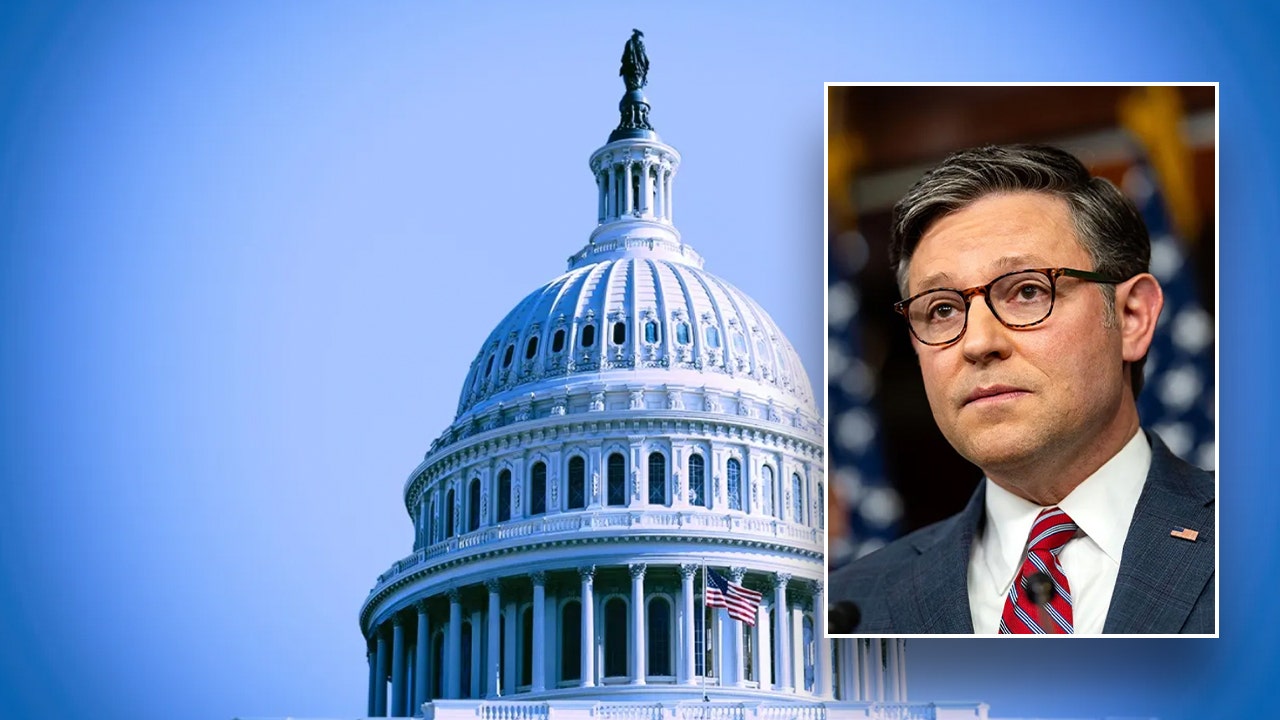Finance
Why borrowing costs for nearly everything are surging, and what it means for you

Federal Reserve Board Chair Jerome Powell speaks during a news conference following a Federal Open Market Committee meeting at the Federal Reserve in Washington, D.C., on July 26, 2023.
SAUL LOEB | Getty
Violent moves in the bond market this week have hammered investors and renewed fears of a recession, as well as concerns about housing, banks and even the fiscal sustainability of the U.S. government.
At the center of the storm is the 10-year Treasury yield, one of the most influential numbers in finance. The yield, which represents borrowing costs for issuers of bonds, has climbed steadily in recent weeks and reached 4.8% on Tuesday, a level last seen just before the 2008 financial crisis.
The relentless rise in borrowing costs has blown past forecasters’ predictions and has Wall Street casting about for explanations. While the Federal Reserve has been raising its benchmark rate for 18 months, that hasn’t impacted longer-dated Treasurys like the 10-year until recently as investors believed rate cuts were likely coming in the near term.
That began to change in July with signs of economic strength defying expectations for a slowdown. It gained speed in recent weeks as Fed officials remained steadfast that interest rates will remain elevated. Some on Wall Street believe that part of the move is technical in nature, sparked by selling from a country or large institutions. Others are fixated on the spiraling U.S. deficit and political dysfunction. Still others are convinced that the Fed has intentionally caused the surge in yields to slow down a too-hot U.S. economy.
“The bond market is telling us that this higher cost of funding is going to be with us for a while,” Bob Michele, global head of fixed income for JPMorgan Chase’s asset management division, said Tuesday in a Zoom interview. “It’s going to stay there because that’s where the Fed wants it. The Fed is slowing you, the consumer, down.”
The ‘everything’ rate
Investors are fixated on the 10-year Treasury yield because of its primacy in global finance.
While shorter-duration Treasurys are more directly moved by Fed policy, the 10-year is influenced by the market and reflects expectations for growth and inflation. It’s the rate that matters most to consumers, corporations and governments, influencing trillions of dollars in home and auto loans, corporate and municipal bonds, commercial paper, and currencies.
“When the 10-year moves, it affects everything; it’s the most watched benchmark for rates,” said Ben Emons, head of fixed income at NewEdge Wealth. “It impacts anything that’s financing for corporates or people.”
The yield’s recent moves have the stock market on a razor’s edge as some of the expected correlations between asset classes have broken down.
Stocks have sold off since yields began rising in July, giving up much of the year’s gains, but the typical safe haven of U.S. Treasurys has fared even worse. Longer-dated bonds have lost 46% since a March 2020 peak, according to Bloomberg, a precipitous decline for what’s supposed to be one of the safest investments available.
“You have equities falling like it’s a recession, rates climbing like growth has no bounds, gold selling off like inflation is dead,” said Benjamin Dunn, a former hedge fund chief risk officer who now runs consultancy Alpha Theory Advisors. “None of it makes sense.”‘
Borrowers squeezed
But beyond investors, the impact on most Americans is yet to come, especially if rates continue their climb.
That’s because the rise in long-term yields is helping the Fed in its fight against inflation. By tightening financial conditions and lowering asset prices, demand should ease as more Americans cut back on spending or lose their jobs. Credit card borrowing has increased as consumers spend down their excess savings, and delinquencies are at their highest since the Covid pandemic began
“People have to borrow at a much higher rate than they would have a month ago, two months ago, six months ago,” said Lindsay Rosner, head of multi sector investing at Goldman Sachs asset and wealth management.
“Unfortunately, I do think there has to be some pain for the average American now,” she said.
Retailers, banks and real estate
Beyond the consumer, that could be felt as employers pull back from what has been a strong economy. Companies that can only issue debt in the high-yield market, which includes many retail employers, will confront sharply higher borrowing costs. Higher rates squeeze the housing industry and push commercial real estate closer to default.
“For anyone with debt coming due, this is a rate shock,” said Peter Boockvar of Bleakley Financial Group. “Any real estate person who has a loan coming due, any business whose floating rate loan is due, this is tough.”
The spike in yields also adds pressure to regional banks holding bonds that have fallen in value, one of the key factors in the failures of Silicon Valley Bank and First Republic. While analysts don’t expect more banks to collapse, the industry has been seeking to offload assets and has already pulled back on lending.
“We are now 100 basis points higher in yield” than in March, Rosner said. “So if banks haven’t fixed their issues since then, the problem is only worse, because rates are only higher.”
5% and beyond?
The rise in the 10-year has halted in the past two trading sessions this week. The rate was 4.71% on Thursday ahead of a key jobs report Friday. But after piercing through previous resistance levels, many expect that yields can climb higher, since the factors believed to be driving yields are still in place.
That has raised fears that the U.S. could face a debt crisis where higher rates and spiraling deficits become entrenched, a concern boosted by the possibility of a government shutdown next month.
“There are real concerns of ‘Are we operating at a debt-to-GDP level that is untenable?’” Rosner said.
Since the Fed began raising rates last year, there have been two episodes of financial turmoil: the September 2022 collapse in the U.K.’s government bonds and the March U.S. regional banking crisis.
Another move higher in the 10-year yield from here would heighten the chances something else breaks and makes recession much more likely, JPMorgan’s Michele said.
“If we get over 5% in the long end, this is legitimately another rate shock,” Michele said. “At that point, you have to keep your eyes open for what looks frail.”

Finance
US business equipment borrowings up more than 8% y/y in November, ELFA says

(Reuters) – U.S. companies borrowed 8.7% more to finance equipment investments in November compared with the same period a year earlier, the Equipment Leasing and Finance Association said on Friday.
New loans, leases and lines of credit signed up by companies in November rose to $10.36 billion, from $9.53 billion in the year-ago period.
The Washington-based trade association, which reports economic activity for the more than $1 trillion equipment finance sector, also said that credit approvals for U.S. companies were at 74% in November this year.
The Equipment Leasing & Finance Foundation, ELFA’s non-profit affiliate, said its confidence index for December reached a fresh three-year high, indicating that executives expect continued strength in lending volumes and further improvements in financial conditions.
The ELFA CapEx Finance Index of leasing and finance activity is based on a 25-member survey which includes Bank of America as well as the financing units of Caterpillar, Dell Technologies, Siemens AG, Canon and Volvo AB.
(Reporting by Abhinav Parmar in Bengaluru; Editing by Pooja Desai)
Finance
Trump bull market is just beginning: Fmr. TD Ameritrade CEO
Corporate America is gearing up for Trump 2.0, having already gotten a flavor of what Trump has in mind. Potentially crushing fresh tariffs on China, even if it means higher levels of US inflation. Mass deportations come with their own set of economic risks. And soon, potentially, a new leader atop the Federal Reserve. Is there any way a top executive could prepare for uncertain outcomes tied to these initiatives from the Trump administration? How does one lead their teams when uncertainty begins to reign supreme again? Yahoo Finance Executive Editor Brian Sozzi sat down with former TD Ameritrade CEO and former head football coach at Coastal Carolina University Joe Moglia. Moglia is not only considered a market master for his work from 2001 to 2008 building TD Ameritrade into a trading powerhouse but also a leadership expert. Moglia shares his perspective on the record-setting year for markets, what’s next for investors, and how to lead with a clear focus in 2025.
For full episodes of Opening Bid, listen on your favorite podcast platform or watch on our website.
Yahoo Finance’s Opening Bid is produced by Rachael Lewis-Krisky.
Finance
UK finance minister to revive regular economic talks with China in January trip, sources says

By Joe Cash
BEIJING (Reuters) – Britain’s finance minister Rachel Reeves will visit China on a two-day trip in January to revive high-level economic and financial talks that have been frozen since 2019, three people with knowledge of the plan said.
Reeves is scheduled to meet China’s vice premier He Lifeng, the country’s economy tsar, on Jan. 11 in Beijing to restart what had been annual talks known as the Economic and Financial Dialogue (EFD), they said.
If those discussions show progress, the two sides could look to re-launch what had been a regular and wider meeting known as the Joint Economic and Trade Commission (JETCO) later next year, the sources said.
British businesses have also pressed to restart meetings of the UK-China CEO Council, a group established by then-Prime Minister Theresa May and then-Premier Li Keqiang in 2018, one of the sources added.
Reuters reported on Thursday that HSBC Chairman Mark Tucker will lead a business delegation that will visit China next month in a bid to boost trade and investment with a particular focus on financial services.
Reeves will also go to Shanghai, where she will meet with British companies operating in China on Jan. 12, according to the sources, who asked not to be named because they were not authorized to discuss the plans.
Britain decided to suspend most economic dialogues with China in 2020 after Beijing imposed a national security law in Hong Kong, the former British colony. Since then, spying allegations, the war in Ukraine, and the sanctioning of lawmakers have increased tensions between the two countries.
The Labour government, in power in Britain since July, has made improving ties with China one of its main foreign policy goals after a period under successive Conservative governments when relations plunged to their lowest in decades.
In 2022, then-Prime Minister Rishi Sunak, a Conservative, declared the end of a “golden era” of relations with China that one of his predecessors, David Cameron, had championed.
Over the preceding decade, British and Chinese officials had met annually for high-level trade and investment talks, holding an EFD almost every year and a JETCO every two years.
Those talks resulted in the London-Shanghai stock connect scheme, Britain joining the Beijing-based Asian Infrastructure Investment Bank, and joint investment into green technologies, including the UK’s Hinkley Point C nuclear power plant.
(Reporting by Joe Cash)
-

 Politics1 week ago
Politics1 week agoCanadian premier threatens to cut off energy imports to US if Trump imposes tariff on country
-
/cdn.vox-cdn.com/uploads/chorus_asset/file/25782636/247422_ChatGPT_anniversary_CVirginia.jpg)
/cdn.vox-cdn.com/uploads/chorus_asset/file/25782636/247422_ChatGPT_anniversary_CVirginia.jpg) Technology1 week ago
Technology1 week agoInside the launch — and future — of ChatGPT
-
/cdn.vox-cdn.com/uploads/chorus_asset/file/25789444/1258459915.jpg)
/cdn.vox-cdn.com/uploads/chorus_asset/file/25789444/1258459915.jpg) Technology7 days ago
Technology7 days agoOpenAI cofounder Ilya Sutskever says the way AI is built is about to change
-

 Politics7 days ago
Politics7 days agoU.S. Supreme Court will decide if oil industry may sue to block California's zero-emissions goal
-
/cdn.vox-cdn.com/uploads/chorus_asset/file/25546252/STK169_Mark_Zuckerburg_CVIRGINIA_D.jpg)
/cdn.vox-cdn.com/uploads/chorus_asset/file/25546252/STK169_Mark_Zuckerburg_CVIRGINIA_D.jpg) Technology7 days ago
Technology7 days agoMeta asks the US government to block OpenAI’s switch to a for-profit
-

 Politics1 week ago
Politics1 week agoConservative group debuts major ad buy in key senators' states as 'soft appeal' for Hegseth, Gabbard, Patel
-

 Business5 days ago
Business5 days agoFreddie Freeman's World Series walk-off grand slam baseball sells at auction for $1.56 million
-
/cdn.vox-cdn.com/uploads/chorus_asset/file/23951353/STK043_VRG_Illo_N_Barclay_3_Meta.jpg)
/cdn.vox-cdn.com/uploads/chorus_asset/file/23951353/STK043_VRG_Illo_N_Barclay_3_Meta.jpg) Technology5 days ago
Technology5 days agoMeta’s Instagram boss: who posted something matters more in the AI age




















